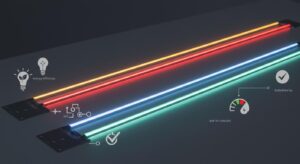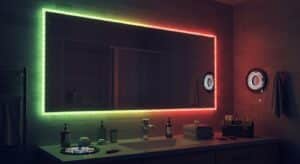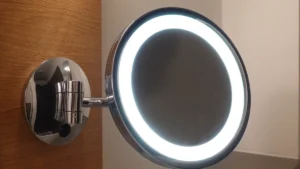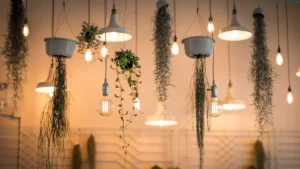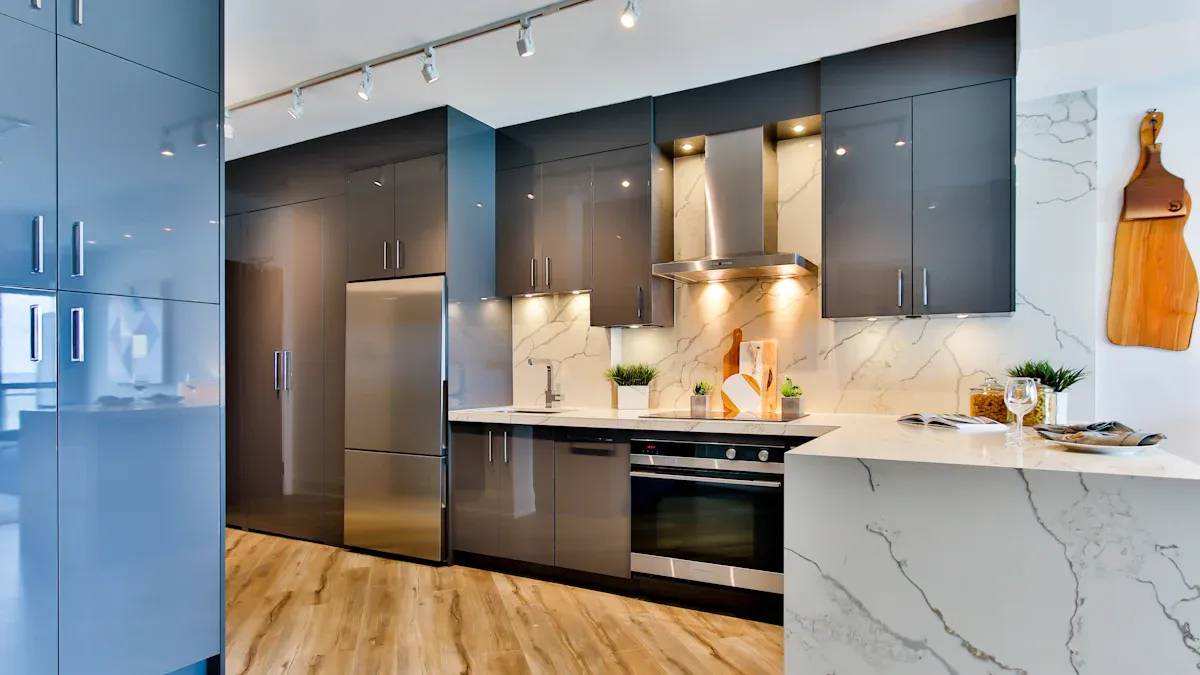
Picture walking into your kitchen with every corner brightly lit. There are no dark spots or harsh lights anywhere. That’s the beauty of under cabinet lighting. It’s not just for looks—it’s useful too. LED strip lights save energy, last long, and stay cool. This makes them perfect for today’s homes. In 2023, these lights were worth $4.32 billion in sales. New LED technology lets you easily adjust brightness and color. You can set the mood for any event with ease.
Key Takeaways
Pick LED strips with good brightness. Aim for 175–525 lumens per foot for bright under cabinet lighting.
Choose the right color temperature. Warm light is cozy, and cool light helps with tasks.
Plan where to place them. Put LED strips near the front of cabinets to avoid shadows and spread light evenly.
Use the right power supply. Match the LED strip voltage and add 10% more wattage to keep it safe.
Make it look nice with extras. Add aluminum channels and motion sensors for a neat and stylish look.
Choosing the Right LED Strip Lights
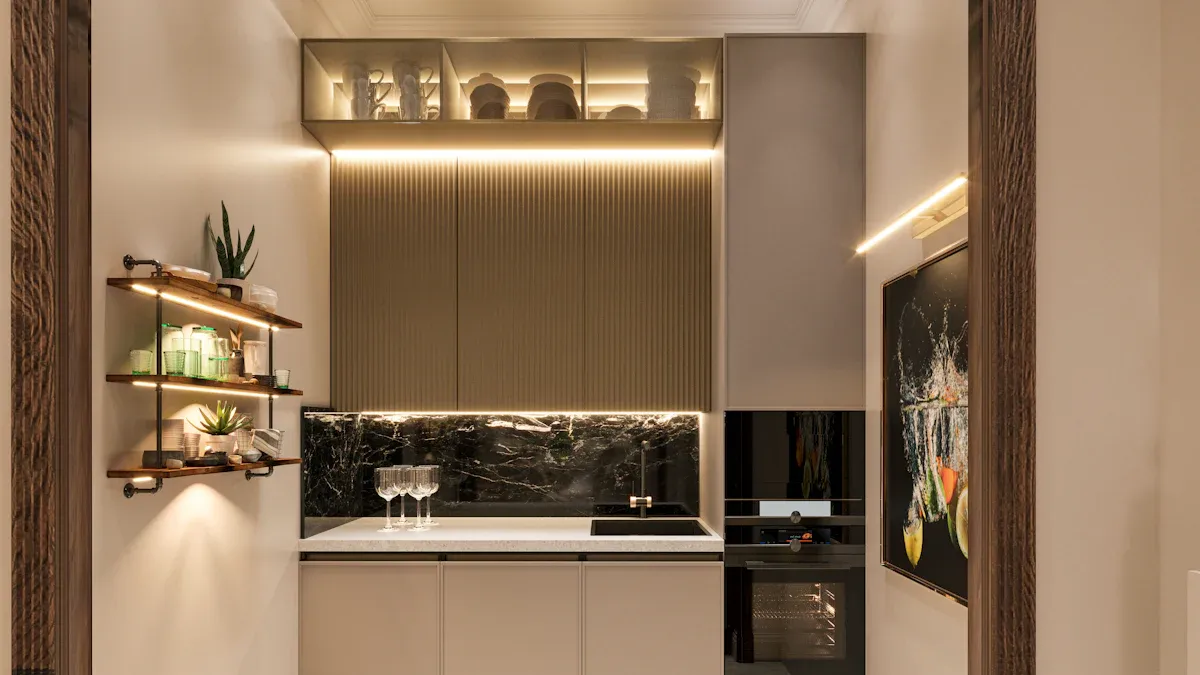
Picking the right LED strip is very important. It makes your space bright, useful, and nice to look at. Here’s what you need to know.
Brightness and Lumens
How bright the LED strip is matters a lot. Brightness is measured in lumens, which show how much light it gives off. For under cabinet lighting, aim for 175–525 lumens per foot. This is enough for tasks like cutting food or reading recipes without being too bright.
Here’s a simple guide:
Accent lighting: 125–250 lumens per foot for soft, cozy light.
Task lighting: 500–1,000 lumens per foot for strong, clear light.
The number of LEDs per foot and their quality also affect brightness. Good LED strips should give even light without dark spots.

Color Temperature Options
The color temperature changes how your space feels and works. It’s measured in Kelvins (K) and goes from warm yellow to cool white. Pick based on how you use the area:
2000–3000 K: Warm light for relaxing or hosting guests.
3100–4500 K: Neutral white light for cooking or cleaning.
3500–5000 K: Bright white light for detailed tasks.
If you’re unsure, choose tunable LED strips. These let you change the color temperature easily. They’re great for kitchens where you need different lighting for parties or cooking.
Voltage and Compatibility
Most LED strips use 12V or 24V power. For bigger kitchens, 24V is better because it works well over long distances. But 12V is safer for homes with kids or pets.
Check the voltage of your LED strip and match it with the power supply. Pick a power supply with at least 10% more wattage than your LED strips need. This stops overheating and keeps everything running smoothly.
By thinking about brightness, color temperature, and voltage, you can pick the best LED strip for your under cabinet lighting.
Placement and Sizing
Getting the placement and sizing right is key to achieving perfect under cabinet lighting. It’s not just about sticking the lights anywhere—it’s about making sure they’re functional and look great.
Start by measuring the length of the area where you’ll install the lights. Use a measuring tape to get accurate dimensions. This helps you choose the right length of the LED strip and avoid gaps or overlaps. If your cabinets have multiple sections, measure each one separately.
When it comes to placement, think about how you’ll use the lights. For task lighting, position the LED strip near the middle front edge of the cabinets. This setup ensures the light shines directly onto the countertop, making it easier to chop veggies or read recipes. If you’re aiming for ambient lighting, place the strip closer to the back edge of the cabinets. Just don’t push it too far back, or you might lose some of the light against the wall.
Here’s a quick tip: If your cabinets have a lip or trim, hide the LED strip behind it. This keeps the lights out of sight while still illuminating your space. It’s a simple trick that gives your kitchen a clean, professional look.
For corners or uneven cabinet lengths, you can cut most LED strip lights to fit. Look for the cut marks on the strip—they’re usually spaced every few inches. Follow the manufacturer’s instructions to avoid damaging the strip.
By carefully planning the placement and sizing of your LED strip, you’ll create under cabinet lighting that’s both practical and stylish.
Selecting the Right Control System and Power Supply
For under cabinet lighting, the control system and power supply are key. They make sure your lights work well. Let’s go through it step by step.
Ways to Control LED Strip Lights
There are many ways to control LED strips. Some are simple, while others are smart. Here’s a quick list:
NexLux LED: Use an app with WiFi to control brightness and sync to music.
L8Star Smart LED: Like NexLux but without WiFi, so it’s less handy.
Pangton Villa LED: No app, but has ten brightness levels and bright white mode.
App controls are the most flexible. You can change brightness, colors, and set timers. If you like smart homes, pick systems that work with Alexa or Google Assistant. Then, you can use your voice to control the lights.
Figuring Out Power Needs
The right power supply is very important for LED strips. Too little power means dim lights. Too much power can cause overheating. Here’s an example:
Description | Value |
|---|---|
Power use per foot | 2.9W |
Total strip length | 28 feet |
Total power needed | 81W |
Suggested power supply | 100W |
To find what you need:
Measure the total strip length.
Check how much power each foot uses (on the box).
Multiply the length by the power per foot.
Add 20% more to keep the system safe.
This extra power stops overheating and keeps things running well.
Keeping It Safe and Working Right
Safety is very important. Follow these tips to keep your LED strips safe:
Keep power connections dry.
Only cut strips where marked.
Avoid long connections to stop overheating.
Allow airflow to prevent heat buildup.
Check for damage or bare wires often.
Most LED strips are safe, but bad-quality ones can be risky. Buy from trusted brands and follow the instructions. A good setup keeps your under cabinet lighting safe and working great.
Installation Guide for Under Cabinet Lighting
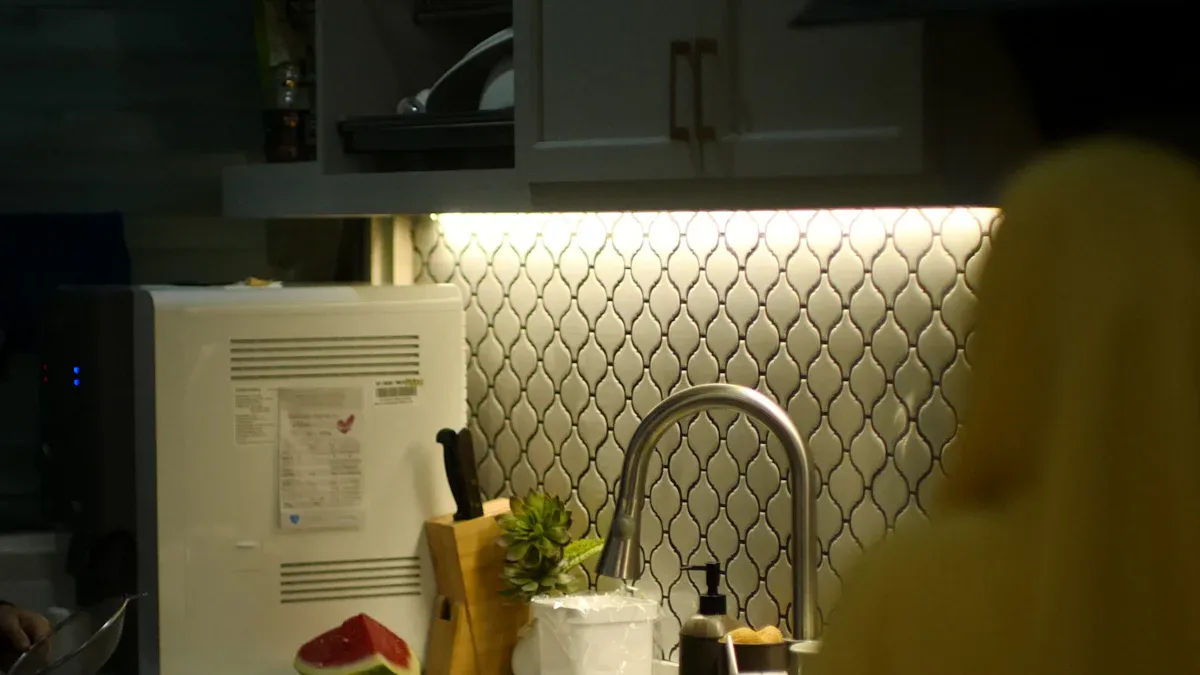
Preparing for Installation
Before you start, gather everything you’ll need. This includes your LED strip, power supply, controller, connectors, scissors, and cleaning supplies. Having all the tools ready saves time and keeps the process smooth. Next, measure the length of the area where you’ll install the lights. Use a measuring tape to get precise dimensions. This step ensures you cut the LED strip to the right size.
Once you’ve measured, clean the surface where the LED strip will go. Dust and grease can stop the adhesive from sticking properly. A clean surface ensures the strip stays in place for a long time. Finally, test the LED strip before cutting or installing it. Plug it into the power supply to make sure it works. This quick check can save you from redoing the setup later.
Mounting LED Strips
Now it’s time to mount the LED strip. Start by cutting the strip to the correct length. Look for the marked cut points on the strip and use scissors to make clean cuts. Be careful not to cut through any circuits. If your cabinets have a lip or trim, hide the strip behind it for a sleek look.
Peel off the backing of the adhesive on the LED strip. Stick the strip onto the cleaned surface, pressing firmly to ensure it adheres well. For extra durability, consider using aluminum extrusions. These not only secure the strip but also prevent light spotting and help with heat dissipation, making your LED strip last longer.
Connecting and Testing the System
With the strip mounted, it’s time to connect everything. Attach the LED strip to the power supply and controller, ensuring the polarity matches. Secure the connections with connectors or clips to avoid loose wires. Once connected, test the system. Turn on the lights to check if they illuminate evenly and function as expected.
For safety, inspect the setup for any exposed wires or loose connections. If everything looks good, conceal the wiring using cable ties or clips. This keeps your installation neat and prevents accidents. Run the lights for a few hours to ensure they work consistently without overheating. Once tested, your under cabinet lighting is ready to transform your space!
Tips for Achieving Perfect Lighting
Avoiding Shadows and Uneven Lighting
Shadows can make your lighting look bad and less useful. To stop this, place your LED strip correctly. Put the strip near the front of the cabinet. This helps the light spread evenly on the countertop. If it’s too far back, shadows may appear from the cabinet edge.
Using continuous LED strips is another good idea. These give even light, unlike puck lights that leave bright and dark spots. For bigger cabinets, overlap the strips a little to remove shadowy areas.
Think about how surgical lights work. They spread light evenly to avoid shadows, which helps with detailed tasks. Use this idea for your LED setup to get perfect lighting in your kitchen or workspace.
Enhancing Aesthetics with LED Strip Lights
LED strips don’t just light up your space—they make it stylish. Pick strips with adjustable colors to match your mood or event. Warm colors feel cozy for dinners, while cool whites look modern and clean. RGB strips can add fun colors for parties or holidays.
For a neat look, hide the strips behind cabinet edges or use aluminum channels. These channels cover the strips and soften the light for a smooth glow. Add dimmers or smart controls to easily change brightness and colors. This makes your lighting both useful and attractive.
Benefit | Description |
|---|---|
Energy Efficiency | Uses much less energy than old-style lights, saving money. |
Longevity | Lasts 15,000 to 50,000 hours, so you replace them less often. |
Customization Options | Offers many colors and smart features for easy control. |
Using Accessories for a Professional Finish
Accessories can improve how your LED strips look and work. Use corner connectors to handle tricky angles and keep the design smooth. Aluminum channels hold the strips in place and help them stay cool, making them last longer.
Keep wires tidy with clips or sticky cable holders. This makes your setup look clean and organized. You can also add motion sensors or remote controls. These make your lighting easier to use and more stylish.
By planning placement, adding style, and using helpful accessories, you can create lighting that’s both beautiful and practical.
Achieving perfect under cabinet lighting with LED strip lights is easier than you think. Let’s quickly recap the steps:
Pick the right LED strip light by considering your cabinet material and how bright you want the space.
Decide on the brightness level based on whether you need task lighting or ambiance.
Use a checklist to finalize details like placement, power supply, and control options.
Once you’ve got everything ready, it’s time to install under cabinet lighting and transform your space. Whether you’re upgrading your kitchen or adding a modern touch to your workspace, this project is worth it. So, grab your tools and get started today. You’ll love the difference it makes!
FAQ
What tools do I need to install LED strip lights under cabinets?
You’ll need a measuring tape, scissors, a power supply, connectors, and cleaning supplies. If you want a professional finish, grab aluminum channels and cable clips. Testing the lights before installation is also a good idea.
Tip: Keep everything within reach to save time during installation!
Can I cut LED strip lights to fit my cabinets?
Yes, most LED strips can be cut to size. Look for the marked cut points on the strip. Use scissors to make clean cuts without damaging the circuits. Always follow the manufacturer’s instructions to avoid mistakes.
Are LED strip lights safe for kitchens?
Absolutely! LED strips stay cool and use low voltage, making them safe for kitchens. Just ensure the power connections stay dry and secure. For extra safety, buy high-quality strips from trusted brands.
How do I hide the wires for a clean look?
Use cable clips or adhesive wire holders to keep wires neat and out of sight. You can also tuck them behind cabinet edges or use aluminum channels for a polished finish.
Pro Tip: Concealing wires not only looks better but also prevents accidents.
Can I control LED strip lights with my phone?
Yes, many LED strips come with smart controls. You can use apps to adjust brightness, colors, and even set timers. Look for strips compatible with Alexa or Google Assistant for voice control.
Emoji Bonus: 🎉 Smart controls make lighting fun and super convenient!
See Also
Illuminate Your Kitchen Cabinets With LED Strip Lighting
Selecting The Perfect LED Strip Lights For Linear Lighting
Effective Installation Tips For RGB LED Strip Lights
Best Practices For Installing LED Strip Lights In 2025
Customizing COB LED Strips For Your Unique Needs
